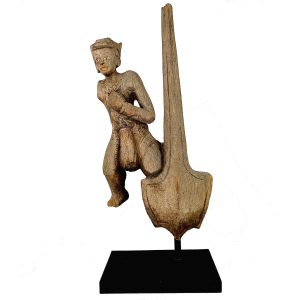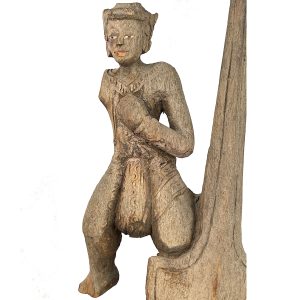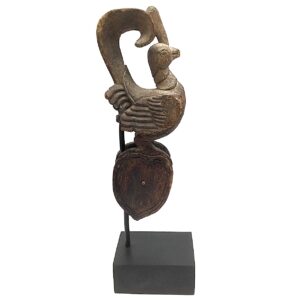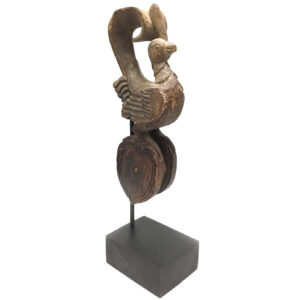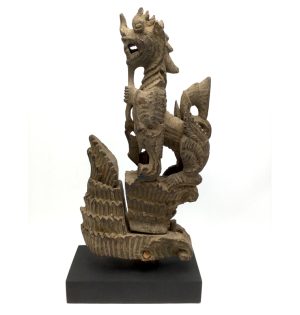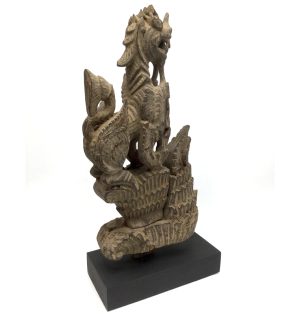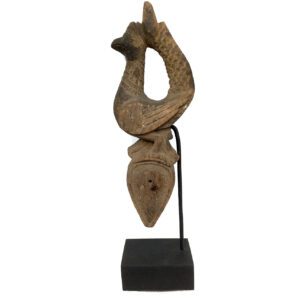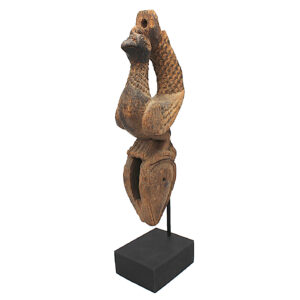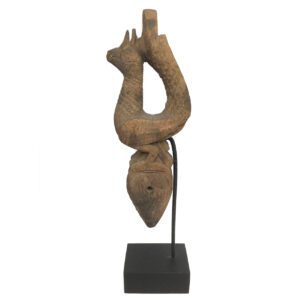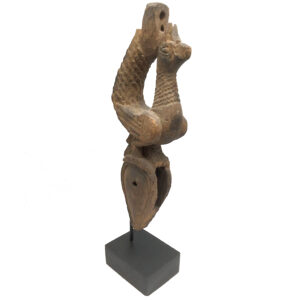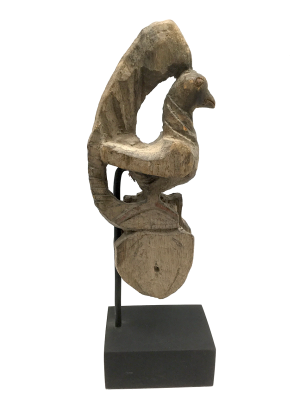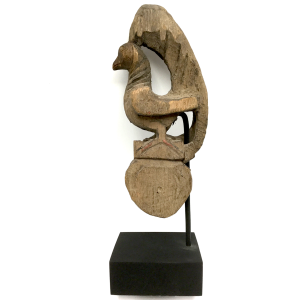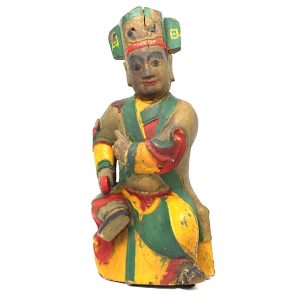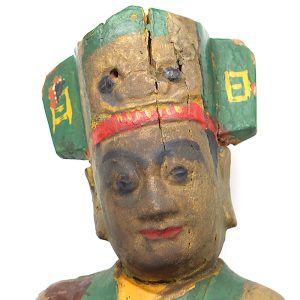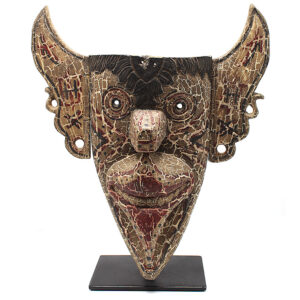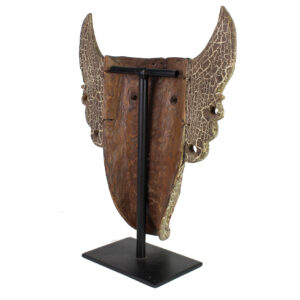-
Sale!


$450.00 Original price was: $450.00.$315.00Current price is: $315.00.
H: 23″ W: 10″ D: 5.5″ | CALL 213-568-3030 OR EMAIL [email protected] FOR SHIPPING
This fanciful teak carving is a Nat placed atop a large shield wearing a sarong and eyes with inset mother of pearl. Although of shamanistic origins, they are still in Buddhist temples, pagodas, government buildings, and in nat centers throughout Burma.
-
Sale!


$235.00 Original price was: $235.00.$150.00Current price is: $150.00.
H: 10.5” W: 3.25” D: 2.375” | FREE SHIPPING WITHIN CONTINENTAL U.S.
Elegant antique heddle-pulley carved from a single piece of Burmese teak topped by a hamsa, a goose-like bird and sacred Buddhist symbol of wisdom. Auspicious symbolic animal images are believed protect the weaver, assure quality weaving, and pleases the gods and spirits. Finely weathered from time and use.
-


$325.00
H: 14.5” W: 17.75” D: 3.375” | FREE SHIPPING WITHIN CONTINENTAL U.S.!
Finely carved figures were attached to ox cart yokes to protect farmers from malevolent spirits who inhabited all seen/unseen sectors of their world. . This beautifully carved ox cart yolk image is a chinthe, a mythical Burmese lion/dragon creature commonly decorating many everyday items. A propitious spiritual and protective guardian, the animalsymbolizes power, courage, and strength. This carving displays the common traits of a lions with a long face, large eyes, a long sharp nose, a lion-like beard, and a flame-like shape on the top of his head. Masterfully carved with careful attention to details, see the deeply incised hairs that cover his body. The 2-part piece is held together with a wooden plug. Though for daily use, Burmese craftsmen created beautiful objects and finished them with the best materials they could afford.
-
Sale!


$245.00 Original price was: $245.00.$150.00Current price is: $150.00.
H: 13” W: 3.75” D: 2.625” | FREE SHIPPING WITHIN CONTINENTAL U.S.
Burmese teak heddle pulley surmounted by a graceful peacock that symbolizes wholeness, combining colors and fleeting nature of all things. Based on old animistic beliefs, heddles are decorated with auspicious animals providing the weaver protection, assuring good quality weaving and pleasing the gods.
-
Sale!


$245.00 Original price was: $245.00.$175.00Current price is: $175.00.
H: 14″ W: 2.675” D: 3.5” | FREE SHIPPING WITHIN CONTINENTAL U.S.
This elegant heddle pulley carved from a single piece of Burmese teak is topped by a peacock, which in Buddhism represents the short-lived nature of all things. In Burmese animistic traditions, it auspicious animal images protect the weaver, assure quality weaving, and please the gods and spirits. Finely weathered from time and use.
-
Sale!


$265.00 Original price was: $265.00.$185.00Current price is: $185.00.
Ht: 10.625″ W: 3.375″ D: 2.5″|FREE SHIPPING WITHIN CONTINENTAL U.S. !
This elegant antique heddle-pulley carved from a single piece of Burmese teak is topped by a hamsa, a goose-like bird and a sacred Buddhist symbol of wisdom. Auspicious symbolic animal images are believed protect the weaver, assure quality weaving, and pleases the gods and spirits. It is wonderfully weathered from time and use with minor losses with a fine patina. Mounted on a black wood base, this heddle pulley pairs well with item number 11298A.
-
Sale!


$395.00 Original price was: $395.00.$295.00Current price is: $295.00.
H: 13.6 ” W: 7″ D: 5.5″ | FREE SHIPPING WITHIN CONTINENTAL U.S.
Taoist priest or shaman with a double-winged hat with a mythical taotie as a warning against greed and excess. His left hand in the Sword Gesture to cast out evil and right holding a tael symbolizing wealth and good fortune
-


$485.00
H: W: D: Ht: 14.75″ W:12.125″ | FREE SHIPPING WITHIN CONTINENTAL U.S.
-


$675.00
The religion of the ethnic Dayak (Dyak) people of Kalimantan (Borneo), Indonesia is a mix of animism, shamanism and ancestor worship. Their word hudoq describes three different things: it describes the pests that can destroy the rice harvest on which their survival depends; the name of the huge yearly Dyak planting celebration and the name…
-


$295.00
Mask carving is among the oldest of Tibetan art and folk-art forms dating to 6th century Bonpo dances, the religion predating Buddhism, that embraces animism and shamanism dances. Totem animal masks were traditionally used in sacred ceremonial dances: shamanic rituals to thank the gods, expel bad spirits, and ask for blessings; operas in performances without…
End of content
End of content

